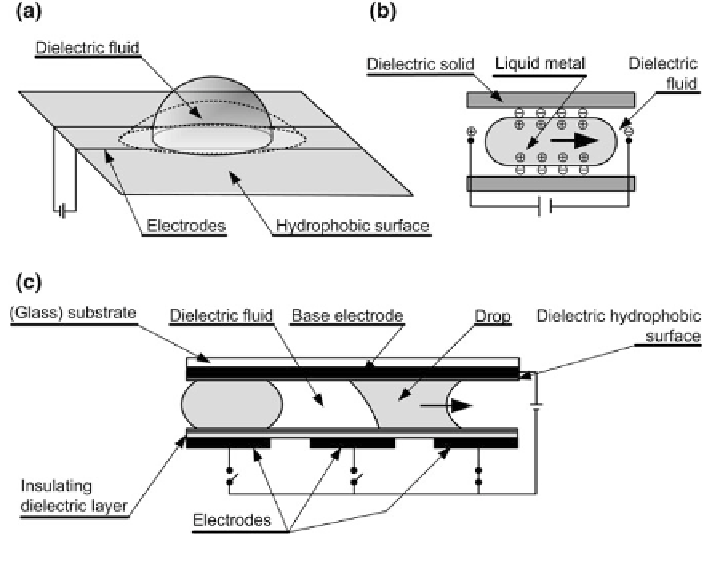Environmental Engineering Reference
In-Depth Information
Fig. 6.17 Examples of the micro
fl
uidic electrocapillary
fl
ow
relatively high electrical conductance of the
uid system, which can lead to high
currents and interactions between the neighbouring channels.
The application of the electrowetting principle in capillary
fl
ow seems to be a
much better solution for magnetic refrigeration. Figure
6.17
c shows the application
of the EWOD principle for the capillary
fl
fl
ow of the droplet. In this particular case
the electrode
s array patterns can be created by photolithography on, e.g. the glass
substrate [
92
,
94
]. A constant ground potential is applied to the droplet of the
polarizable and/or conductive liquid, which is embodied between the bottom plate
of electrodes and a top plate. On the bottom, the electrodes are covered by the
insulating layer in order to prevent the electrical current from passing through the
droplet. Both surfaces on the top and bottom are covered by the hydrophobic
coating. Usually, the
'
ller oil (e.g. silicone oil) surrounds the droplet; however, this
is not necessary in all applications. There are two aims of using the
ller liquid. One
'
is to support the droplet
s motion mechanism and the other is to prevent the
evaporation of the droplet [
92
]. The oil
-
water surface tension gradient induces the
fl
ow of the droplet.
An example of applying the EWOD principle or the manipulation of a drop
s
movement in magnetic refrigeration is shown in Fig.
6.18
. In this particular case,
two drops are applied with their movement, which depends on a certain thermo-
dynamic process in the magnetic refrigeration (e.g.
'
the Brayton refrigeration

Search WWH ::

Custom Search